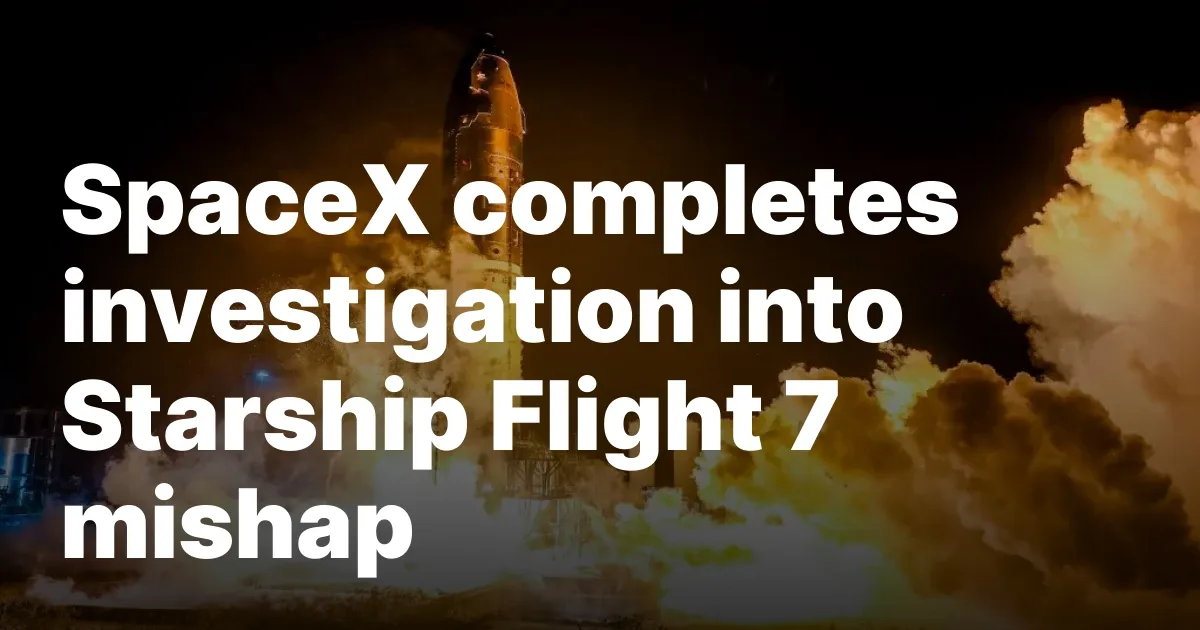
WASHINGTON — SpaceX has revealed new insights into the cause behind the loss of its Starship vehicle during a test flight last month, as the company gears up for its next launch. According to a statement released on February 24, a propellant leak caused by an unexpectedly strong harmonic response was the primary issue during the seventh Starship/Super Heavy test flight on January 16, which resulted in the Starship upper stage disintegrating over the Caribbean.
SpaceX reported a flash in the aft section, often referred to as the “attic,” of Starship near one of its six Raptor engines approximately two minutes after the craft separated from the Super Heavy booster. This flash was followed by a pressure increase, indicating a propellant leak. A second flash occurred two minutes later, leading to “sustained fires” in the attic. These fires resulted in nearly all of Starship’s engines executing controlled shutdown sequences, eventually causing a loss of communication with the spacecraft. The last telemetry was received around 8 minutes and 20 seconds post liftoff.
SpaceX noted that telemetry was lost before the vehicle's autonomous flight termination system was activated. The system eventually triggered about three minutes after communication was lost.
The investigation concluded that the primary cause for the Starship loss was a “harmonic response” that was several times stronger in flight than what was observed during testing. This caused increased stress on the propulsion system hardware, leading to propellant leaks that could not be fully vented from the attic, which then fueled the fires causing engine shutdowns.
As part of the investigation, SpaceX conducted an extended static fire test of the Starship intended for the next mission, Flight 8, on February 12. During this test, engines were fired for 60 seconds to evaluate multiple thrust levels and three different hardware configurations in the Raptor vacuum engine feedlines. These tests aimed to recreate and address the harmonic response observed during Flight 7. Based on findings from the static fire, changes were made to the hardware of the fuel feedlines to vacuum engines, adjustments to propellant temperatures, and a new operating thrust target was established for the upcoming flight test.
Additionally, SpaceX is implementing vents and a gaseous nitrogen purge system to minimize the flammability risk within the Starship attic section.
SpaceX is proceeding with preparations for the next Starship mission, Flight 8, scheduled to launch as early as February 28 from the company’s Starbase site in Boca Chica, Texas, pending approval from the Federal Aviation Administration regarding SpaceX’s investigation into Flight 7.
Flight 8 aims to achieve several objectives that were not demonstrated in the previous flight, including deploying four mass simulators of next-generation Starlink satellites to test the vehicle’s payload deployment system. The Starship will also test new reentry protection technologies, such as metallic tiles with active cooling.
Similar to previous missions, SpaceX will attempt to “catch” the Super Heavy booster back at the Starbase launch tower. The booster has undergone upgrades, including enhanced avionics and power distribution systems, as well as improved igniters for the Raptor engines to address an issue from Flight 7 where one of the 13 engines shut down at ignition during its boostback burn to return to the launch site.
“Starship’s seventh flight test reminded us that developmental progress is not always linear. However, putting flight hardware in a flight environment is the fastest way to demonstrate how thousands of distinct parts come together to reach space,” SpaceX stated in its summary of Flight 7. The company remains committed to achieving ambitious goals in pursuit of full and rapid reusability with its upcoming flights.